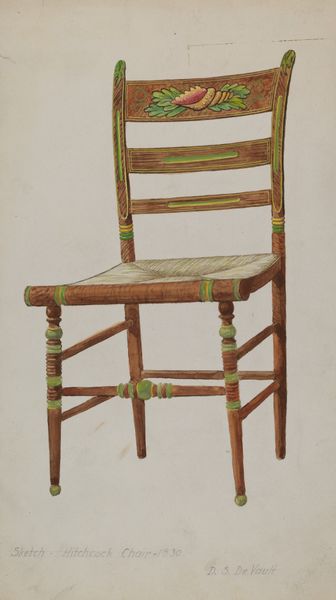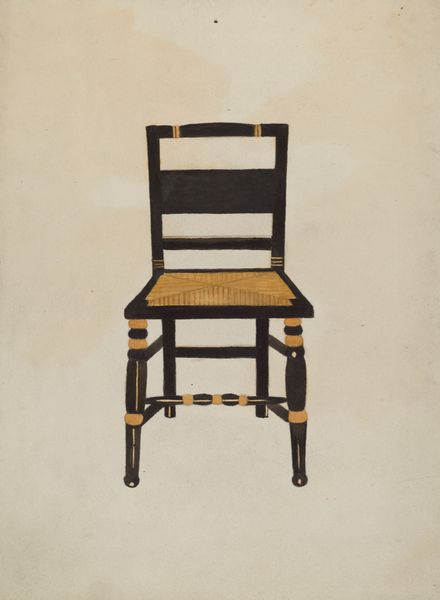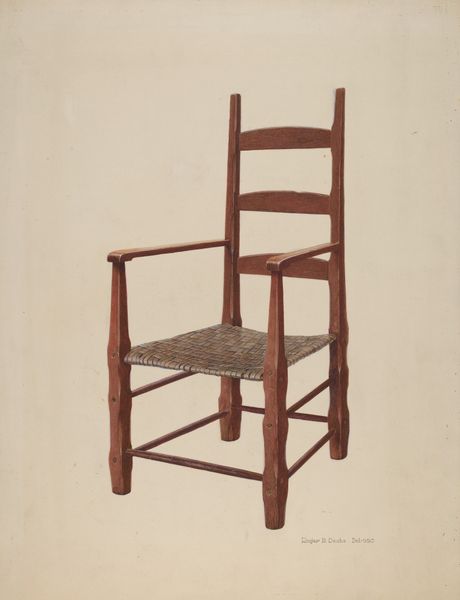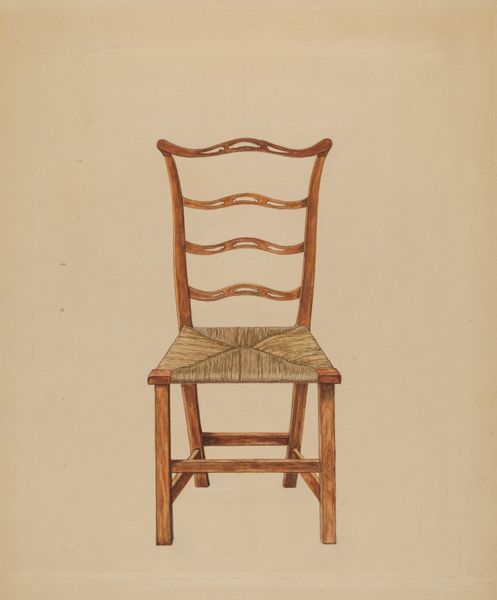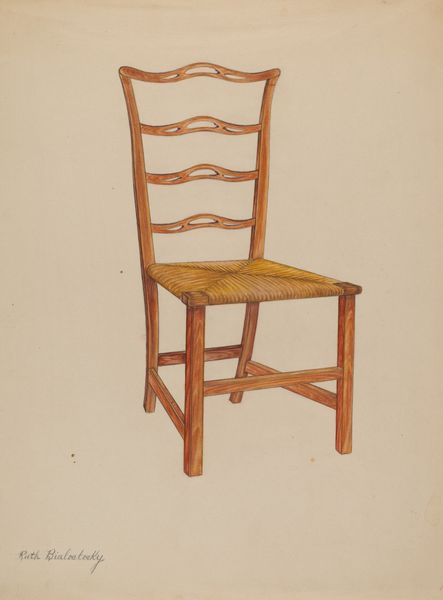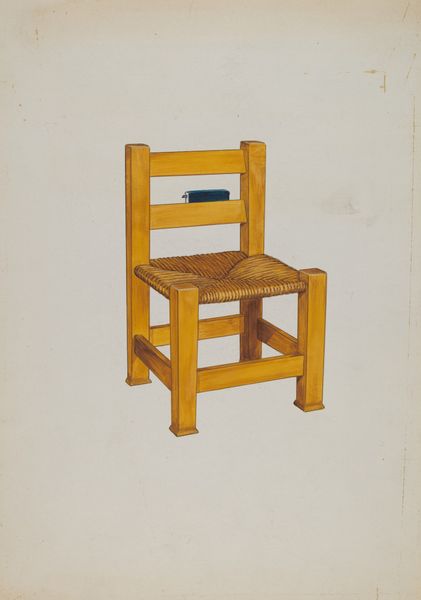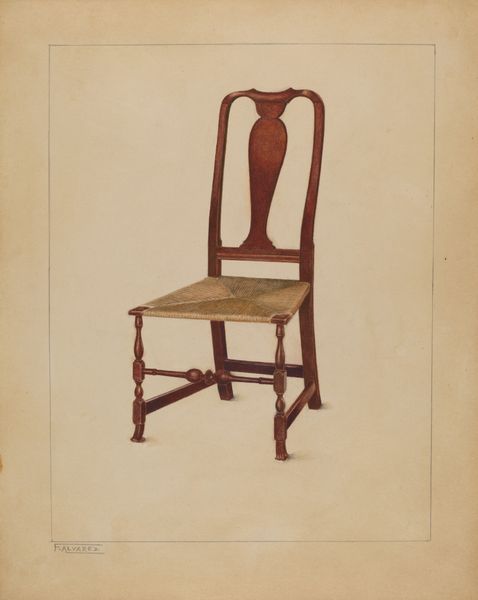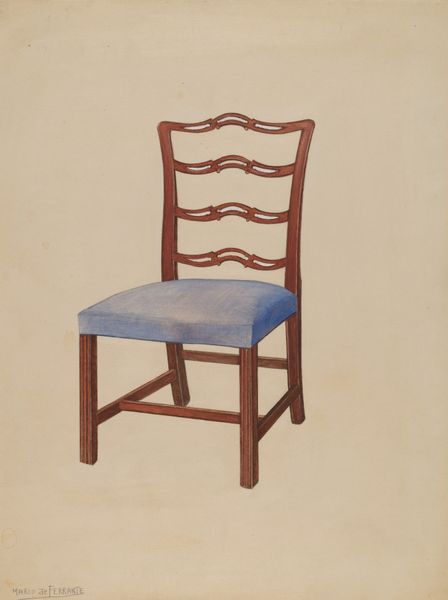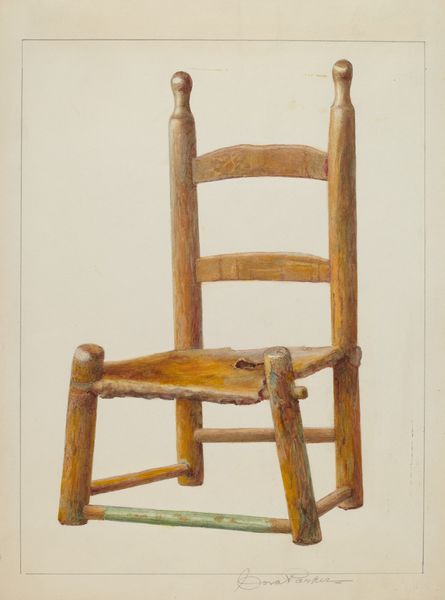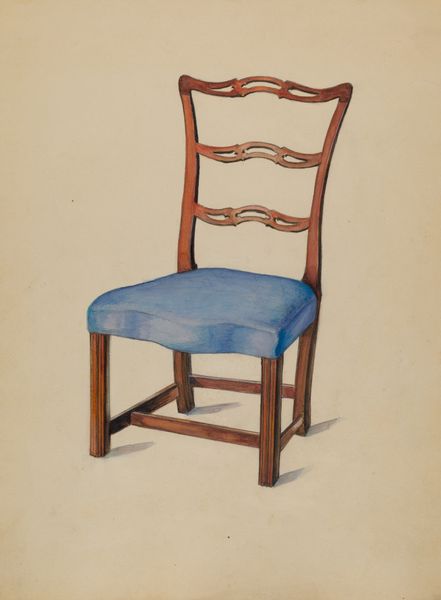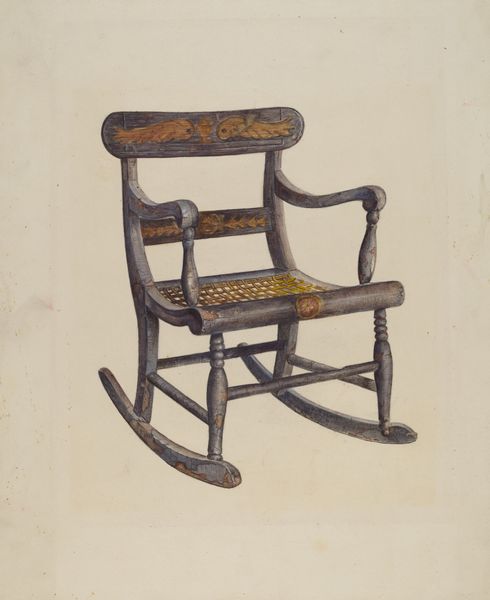
drawing, watercolor, wood
#
drawing
#
figuration
#
oil painting
#
watercolor
#
wood
#
watercolor
Dimensions: overall: 35.2 x 23.9 cm (13 7/8 x 9 7/16 in.) Original IAD Object: none given
Copyright: National Gallery of Art: CC0 1.0
Editor: So, this is an interesting piece, titled "Empire Chair (American)," created around 1940. It seems to be a drawing or watercolor of a wooden chair, very straightforward in its presentation. It feels… nostalgic, maybe? How do you interpret this work within its historical context? Curator: Well, thinking about its place and time, mid-20th century America saw a rise in interest in historical design and craftsmanship. This straightforward depiction suggests a deliberate effort to document and perhaps idealize a piece of American furniture history. The style looks rather conservative doesn't it? What audience do you think might be interested in an image of this chair in 1940? Editor: I'd imagine this would interest those interested in the American crafts movement and the design trends from an earlier era, maybe something for furniture design history. There's something very 'matter-of-fact' here - perhaps meant for teaching purposes or display within a gallery? I wonder how institutions then used pieces like this, not as prized works, but examples of something. Curator: Exactly! Its artistic value lies less in the aesthetic and more in its function as a cultural artifact. Consider the social context of museums during that period. They weren't just displaying "high art." Museums often presented items illustrating American ingenuity and everyday life to educate and perhaps instill patriotic values. Editor: So, its worth might not be just aesthetic, but reflective of its usage by galleries, museums, and perhaps schools interested in promoting something beyond decoration alone, like the American design tradition. Curator: Precisely. Also notice the choice of media, the simplicity. Watercolor feels 'unassuming'. That further directs the gaze away from artistic flair toward a documentary function. Does that alter how you see the chair? Editor: It does! The unpretentious nature of the rendering emphasizes the chair as an example, not a masterpiece, part of how art, history, and public understanding get mixed. I hadn't initially considered that at all! Curator: That's the exciting part, seeing art as part of a wider web of culture and institutions. It changes our view so much.
Comments
No comments
Be the first to comment and join the conversation on the ultimate creative platform.

